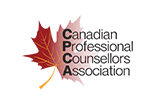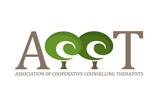Counsellors are required to get creative with their clients, knowing that cookie-cutter techniques don’t necessarily work for every individual client and situation. Counsellors are encouraged to use a number of different skills, including active listening and critical thinking, to adapt to each client’s specific age, experiences, and needs (Port-Burke, n.d.). Using creative counselling techniques helps present a multifaceted approach to clients, giving them a better understanding of what works best for them (Schimmel & Jacobs, 2011).
At Rhodes Wellness College, students receive more than just counsellor training. Earning credentials as a professional counsellor, qualified life coach, and holistic wellness counsellor, students graduate with a strong sense of multidisciplinary tactics that best support clients. By building practical professional skills through workplace-based projects, students graduate feeling confident in their abilities and ready to find the counselling techniques that best suit their new clients. Continue reading to discover the value of creativity during counselling sessions.
Creativity as a Registered Professional Counsellor
Most counsellors are inclined to embrace a client’s creative expression, as it gives them a healthy outlet for acknowledging their feelings and working through hardships (Meyers, 2015). Because creativity is so individual, using creativity as a registered professional counsellor may look different for each individual who graduates from Rhodes Wellness College. Depending on the day, the client, and the session, counsellors may find different forms of inspiration for their creativity (Meyers, 2015). Creativity in counselling requires a shift in focus from a structured counselling technique toward a fluid, dynamic approach that follows the client’s lead (Meyers, 2015). This way, the client is able to embrace the creative process and feel comfortable taking steps toward progress with the creative techniques provided. Creative counsellors often exhibit a level of creativity through their flexibility, risk-taking, and sense of humor (Johnston, 2010). They also often have a strong intuition, high self-confidence and courage, and think outside of the box to help meet clients where they are and achieve the highest level of progress possible (Johnston, 2010).
Use Creative Resources to Encourage Progress
Various techniques and resources may be used to encourage progress for your clients in a creative way during your counsellor therapist career. Popular options include TV, music, journaling, photo journaling, and more (Meyers, 2015). It is generally thought that creativity is for everyone, and it’s just a matter of finding the right medium that helps the client best express themselves (Meyers, 2015). For example, maybe a client feels that a specific song or genre of music accurately describes their current feelings. Or it’s possible that drawing helps a client pinpoint what stressors are present in their life and are contributing to their emotions.
Technology plays an important role in expressing creativity in today’s world. iPads and tablets have been used for successful creative counselling techniques, allowing participants to simply draw visuals of their feelings to help them bring visibility to their emotions (Meyers, 2015). This can be especially useful for children, who may initially have a hard time conceptualizing what they are feeling. When they can turn their feelings into a picture, they can begin to work through them (Meyers, 2015).
Storytelling for Client Breakthroughs
Stories are a powerful way to express feelings. Whether someone is telling a story that happened to them directly or telling a story from another source that resonates with them, stories can serve a valuable purpose in identifying, addressing, and overcoming intense emotions or difficult times (Meyers, 2015). For example, for someone who is feeling symptoms of depression, storytelling may assist them in identifying how exactly depression is affecting their life and what strengths they can cater to in their lives (Murphy, 2012). Externalizing their emotions often allows room for a different perspective and may elicit a form of relaxation and self-confidence through a better understanding of their feelings (Murphy, 2012).
Interested in earning your professional counselling diploma?
Contact Rhodes Wellness College for more information!
Works Cited:
Johnston, Tina Marie, “Creativity in counseling: Breathe Life into Your Work an experiential workshop for the novice counselor” (2010). Educational Specialist, 2009-2019. 93. Retrieved on October 26, 2022 from https://commons.lib.jmu.edu/cgi/viewcontent.cgi?article=1096&context=edspec201019
Meyers, L. (2015). Taking a creative approach to client change. Counseling Today. Retrieved on October 26, 2022 from https://ct.counseling.org/2015/08/taking-a-creative-approach-to-client-change/
Murphy, S. (2012). The power of story. Counseling Today. Retrieved on October 26, 2022 from https://ct.counseling.org/2012/09/the-power-of-story/
Schimmel, C. J, & Jacobs, E. (2011). Ten creative counseling techniques for
helping clients deal with anger. Retrieved on October 26, 2022 from http://counselingoutfitters.com/vistas/vistas11/Article_53.pdf











